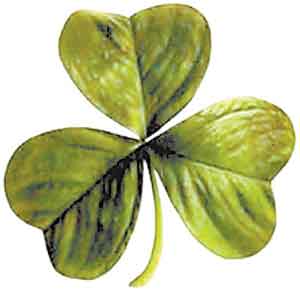 March 17 commemorates the feast of St. Patrick of Ireland, a bishop and missionary of the early Church.
March 17 commemorates the feast of St. Patrick of Ireland, a bishop and missionary of the early Church.
Patrick ("Patricus") was born around the year 390 in Cambria, England. Although he was the son of a deacon and grandson of a priest, he said that he "knew not the true God" in his youth.
At the age of either 14 or 16, he was captured in a pirate raid and enslaved in Ireland for six years. As a sheepherding slave in Ireland, he used his time to pray. He wrote that the "love of God and His fear grew in me more and more, as did the faith." "I prayed in the woods and on the mountain, even before dawn. I felt no hurt from the snow or ice or rain."
After six years of enslavement, he was told in a dream that he would soon go to his own country. He either escaped or was freed, made his way to a port 200 miles away and eventually persuaded some sailors to take him with them.
Upon his return home he received training for the priesthood, including the Latin Bible, which he came to know well, but he did not receive a "higher education," the lack of which he regretted and for which he was criticized.
Patrick was then ordained a bishop and returned to Ireland, the country where he had been enslaved. He worked principally in the north, setting up his see at Armagh. He encouraged the Irish to become monks and nuns. In an attempt to abolish paganism and idolatry, he made many missionary journeys. He spent the rest of his life spreading the Gospel, playing a vital role in converting the country of Druids into a bastion of Christianity. Because of his stand against the Druids, he is invoked against snakes and witchcraft.
According to legend he used the shamrock to explain the Trinity to pagans. The shamrock has three leaves on each stem. Patrick explained that the Trinity is similar to the three-leaf plant: just as the shamrock has three leaves but is one plant, so the Trinity has three persons but is one God.
Although he had little learning and less rhetorical training, St. Patrick had sincere simplicity and deep pastoral care. He made no distinction of classes in his preaching and was himself ready for imprisonment or death in order to follow Christ.
He is also considered a secondary patron saint of Nigeria, next to the Virgin Mary. In the early 1900s Irish missionaries spread the message of Christianity to Nigeria, and the African nation is now home to about 20 million Catholics.
Patrick died in 461. He is buried in County Down, Ireland.
-- Sources: "The Oxford Dictionary of Saints" by David Hugh Farmer, www.catholicnewsagency.com
Related: Lorica of Saint Patrick
 What is the Holy Trinity?
What is the Holy Trinity?
St. Patrick used the analogy of a shamrock to explain the Holy Trinity when converting the Celtic peoples. Just as in a shamrock there are three leaflets but one leaf, so in the Trinity there are Three Divine Persons but one God.
The Catechism of the Catholic Church (253-255) states that we confess one God in three persons, the “consubstantial Trinity.” Each of them is entirely God and equal. They are distinct from one another: “It is the Father who generates, the Son who is begotten, and the Holy Spirit who proceeds.” (Lateran Council IV, 1215).
But they are also relative to one another: “In the relational names of the persons the Father is related to the Son, the Son to the Father, and the Holy Spirit to both.” (Council of Toledo XI, 675)
― AmericanCatholic.org